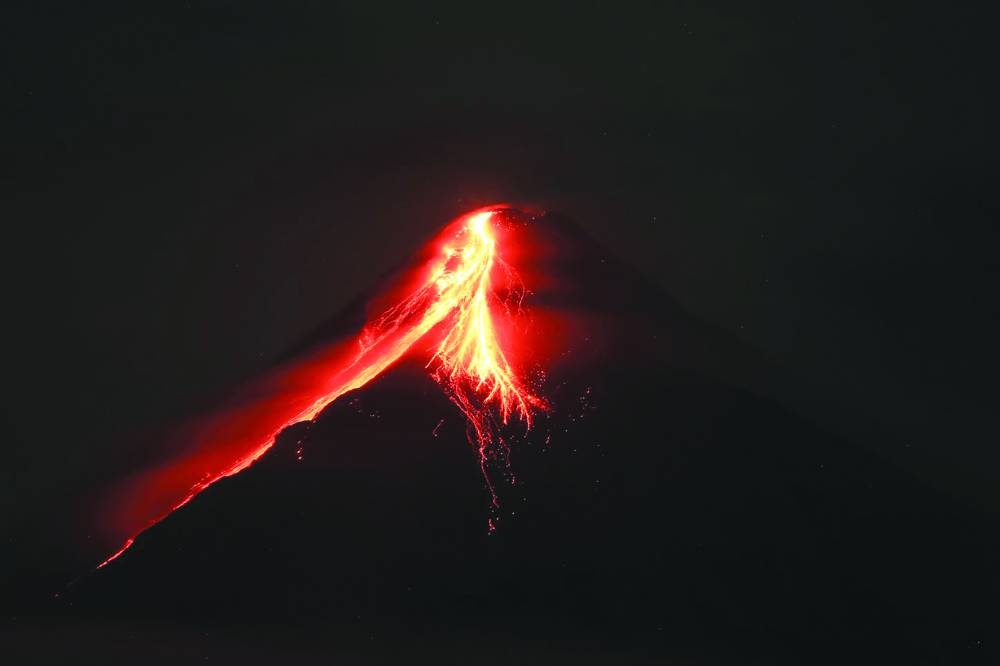Thousands of people living near a Philippine volcano have taken shelter in evacuation centres as officials warned yesterday of health risks from ash and toxic gases spewing from the rumbling crater.
Seismology researchers said they had recorded at least one volcanic earthquake in the past 24 hours and red-hot rocks were falling from Mount Mayon in the central province of Albay.
More than 12,800 people have been moved to evacuation centres, the Philippine civil defence office said, most from farming villages at or near the foot of the volcano.
“We’re away from our home, but it’s still better here because it’s too dangerous,” mother-of-two Rachel Ramirez, 30, told AFP during her third day at a school near the town of Daraga that had been turned into an emergency shelter.
Mayon, about 330km (205 miles) southeast of the capital Manila, is considered one of the most volatile of the country’s 24 active volcanoes.
The Philippine Institute of Volcanology and Seismology said rocks were falling from a disintegrating lava dome being pushed out of the crater by molten material below the earth.
The rocks were raining down on areas up to 2km away and sulphur dioxide (SO2) emissions had tripled on Saturday, state volcanologists said.
“There is a concomitant health risk while being close to the eruption because of inhaling SO2 gas or the particulate matter of ashfalls,” Health Secretary Teodoro Herbosa told a press briefing yesterday.
On Thursday a five-step alert system for the volcano had been raised from two to three.
“With Albay in a state of calamity due to Mayon’s activity, we remind people to follow the recommendations and evacuation instructions of your local governments,” Philippine President Ferdinand Marcos said on Saturday.
Earthquakes and volcanic activity are common in the Philippines due to its position on the Pacific “Ring of Fire”, where tectonic plates collide.
Just five years ago, Mount Mayon displaced tens of thousands of people after spewing millions of tonnes of ash, rocks and lava.
Mayon lies in a region also hit by many of the roughly 20 typhoons or tropical storms to strike the Philippines each year.

Mount Mayon spews lava during an eruption yesterday near Legazpi city in Albay province, south of Manila.
